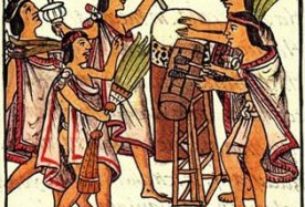A Mexico book by ‘Mexico Mike’ Nelson
I’d love to have had this book five years ago when we first came to live in Mexico. It’s not that we ran into a string of problems then but it’s just such a useful source of information and opinion about living here it would have cut a lot of corners for us at the time.
As the author says, this book is written for “people of all ages who want to live in Mexico and Central America, from retirees to baby-boomers who want a new life to artists and writers who want a stimulating and less expensive way of life.”
Nelson’s credentials are that he has lived and travelled in Mexico for thirty years and has written five other books about places and experiences in this country. I remember him, too, for the highly informative booklets he wrote for Sanborn’s Insurance, which we were given along with our policies at the border when we first entered the country. It was one of those detailed pamphlets that helped us drive from Laredo to Guadalajara and straight to our hotel without getting lost.
Nelson is always the cheerful optimist. You’ll do well in Mexico, he says, if you have a spirit of adventure, are not anal-retentive, have a sense of humor, are willing to accept things as they are and if you truly like people.” I imagine he fits his own prescription perfectly.
One of the most useful features of the book is that the author lists so many sources of information and assistance. Even after five years here, I’m surprised to find there are so many people and places to fall back on when you have questions.
A comprehensive list of web-sites and internet sources is given for travellers and residents. So, too, there’s a full list of U.S. consulates and consular agents and Canadian consulates and embassies for all of Mexico. Also listed are all the Mexican government tourist offices in the U.S. and Canada. A bunch of newsletters about living in Mexico are also reviewed and full details given on how to obtain subscriptions. You’ll find a list of American Legion Posts and info on AA meetings in a number of Mexican centers. Nelson even has some candid advice for gays and lesbians who travel the country.
Nelson is just as comprehensive with information about RV parks, cellular phones, computers and internet service providers, banking, credit cards, house prices, medical care and a host of other features that the regular guidebooks don’t necessarily cover. Indeed, there’s something to learn on almost every page. I should also add that I found this an attractively laid-out book with its bold-type quotes, making topics easy to find, together with short, easy-to-read chapters.
I shouldn’t give the impression that it’s simply a book of lists. One of the most enjoyable sections is a comprehensive rundown of places for gringos to live in Mexico, covering many parts of the country. In all, he covers some forty cities, towns and resorts. The only mystery to my wife and me is that our favorite city, Jalapa, never gets a mention.
It was fun to compare the author’s impressions with our own. After reading those reviews, we feel we really must go back to Cuernavaca to see if it’s as good as Nelson says. We’ve had two shorts stays there but his comments really make us want to go back. And is Morelia, which we liked, really as conservative as he makes out? He makes the Baja sound less interesting than I would have thought while El Paraiso is a place I really must visit someday in the not-too-distant future.
One useful service that the book performs is to let retirees and snowbirds outside Mexico know that there are many places to settle other than San Miguel de Allende and the Chapala/Ajijic area. There may not be quite as many gringos in those other areas such as Morelia and the Baja, but there are still advantages and attractions to be found.
Nelson has sprinklings of commentary for different groups of people. For men, for instance: “You will find European women to be more interesting than American women and easier to get to know.” And for women: “Many women find a new life that is much happier and fuller than the one they left behind.” And for gays and lesbians: “There are fewer hate crimes in Mexico, so you will be much safer than you would be in the States.”
We recently returned from a tour of colonial cities in Central Mexico. Reading Mike Nelson’s book has only whetted our appetites to get back on the road again in this constantly varied and surprising country.
Verdict: A genuinely useful guide for anyone contemplating a move to Mexico.

Live Better South of the Border
By ‘Mexico’ Mike Nelson
Roads Scholar Press, 1997
Available from Amazon Books: Paperback


